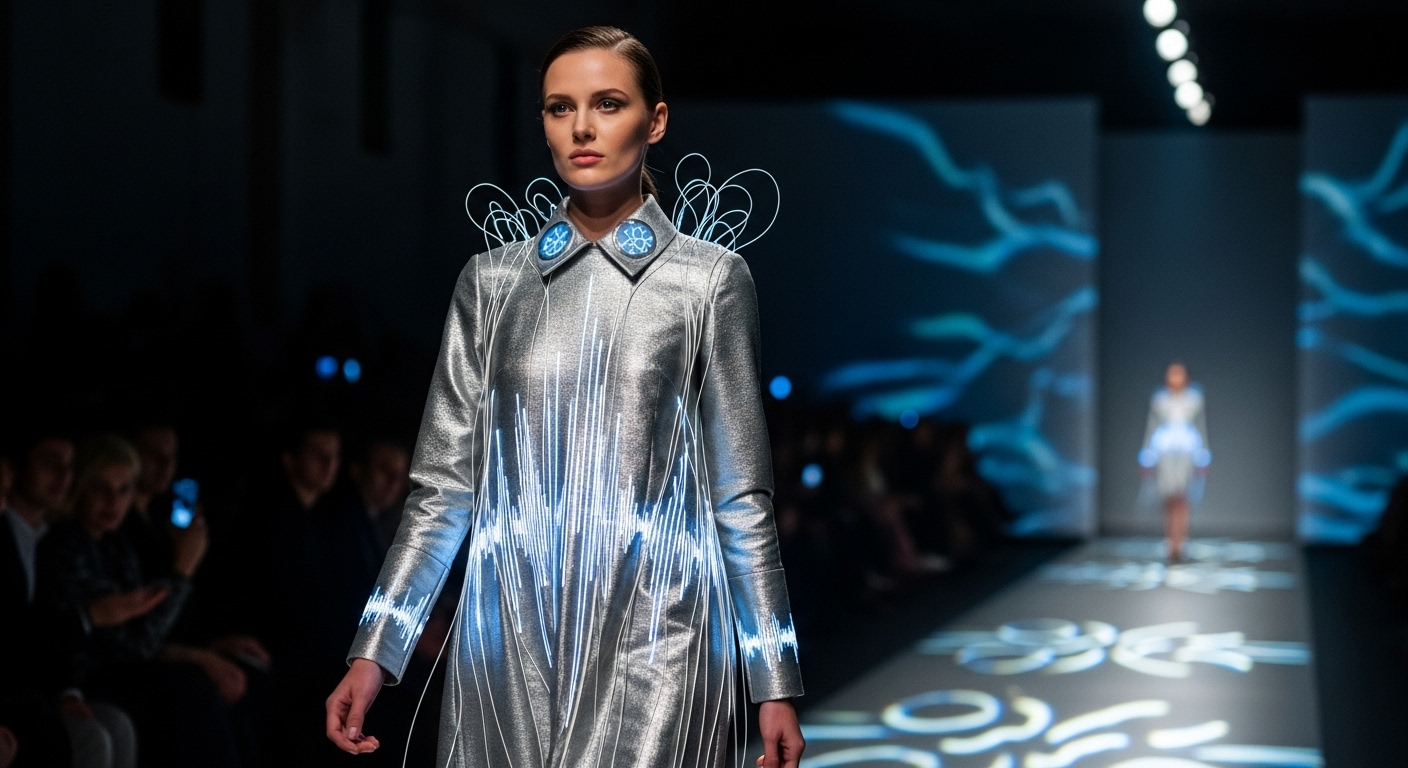Holographic Fashion: Redefining Couture in the Digital Age
In a world where technology seamlessly intertwines with every aspect of our lives, the fashion industry is experiencing a revolutionary transformation. Holographic fashion, once confined to the realm of science fiction, is now emerging as a groundbreaking force in haute couture and ready-to-wear collections. This cutting-edge fusion of fashion and technology is not only reshaping how we perceive clothing but also challenging traditional notions of materiality, sustainability, and self-expression in the digital age.

From Concept to Catwalk
The transition of holographic fashion from conceptual art to wearable reality has been nothing short of remarkable. Today’s holographic garments utilize state-of-the-art projection systems and smart fabrics that can change patterns, colors, and even textures in real-time. These innovations have caught the attention of major fashion houses, with brands like Gucci and Balenciaga incorporating holographic elements into their collections.
The Technology Behind the Trend
At the heart of holographic fashion lies a complex interplay of cutting-edge technologies. Advanced projection mapping techniques allow designers to create three-dimensional illusions on fabric surfaces. Nano-scale light-manipulating materials embedded in textiles enable garments to shift appearance based on environmental factors or wearer preferences. Additionally, augmented reality interfaces are being integrated, allowing users to customize their holographic outfits through smartphone apps.
Sustainability and the Virtual Wardrobe
One of the most compelling aspects of holographic fashion is its potential to address sustainability concerns in the industry. By allowing a single garment to transform its appearance instantly, holographic technology could significantly reduce the need for multiple clothing items. This virtual wardrobe concept not only minimizes waste but also offers consumers endless variety without the environmental cost of fast fashion.
Challenges and Controversies
Despite its promise, holographic fashion faces several hurdles. Critics argue that the technology-dependent nature of these garments raises questions about accessibility and the digital divide. There are also concerns about privacy and data security, as smart holographic clothing could potentially collect and transmit personal information. Additionally, traditionalists in the fashion world express worries about the loss of craftsmanship and tactile experiences associated with conventional textiles.
The Future of Fashion Shows and Retail
Holographic fashion is revolutionizing how collections are presented and sold. Virtual fashion shows, where holographic models showcase digital garments, are becoming increasingly common. These events not only reduce the carbon footprint associated with traditional fashion weeks but also democratize access to high-end fashion presentations. In retail, holographic fitting rooms allow customers to try on virtual versions of garments, potentially reducing returns and enhancing the shopping experience.
Cultural Impact and Identity Expression
As holographic fashion gains traction, it’s sparking conversations about identity, self-expression, and the nature of reality in the digital age. The ability to instantly alter one’s appearance raises philosophical questions about authenticity and the fluidity of personal style. Some see holographic clothing as the ultimate form of self-expression, while others worry about the potential for digital manipulation and the blurring of lines between physical and virtual identities.
Collaborations Across Industries
The rise of holographic fashion has led to unprecedented collaborations between fashion designers, tech companies, and even gaming industries. Partnerships between luxury brands and tech giants are resulting in innovative wearable devices that seamlessly blend style and functionality. Meanwhile, the gaming industry is exploring ways to bring holographic fashion into virtual worlds, creating new revenue streams and forms of digital self-expression.
Educational Implications
Fashion schools and design institutions are rapidly adapting their curricula to include holographic design techniques. This shift is creating a new generation of designers fluent in both traditional craftsmanship and cutting-edge technology. As the demand for professionals skilled in holographic fashion grows, we’re seeing the emergence of specialized programs and certifications focused on this niche.
Conclusion
Holographic fashion stands at the forefront of a new era in clothing design and wearable technology. As it continues to evolve, it promises to reshape not just what we wear, but how we interact with our garments and express ourselves in both physical and digital realms. While challenges remain, the potential for innovation, sustainability, and creative expression is boundless. As we look to the future, one thing is clear: holographic fashion is more than just a fleeting trend—it’s a glimpse into the transformative power of technology in our daily lives and self-expression.




